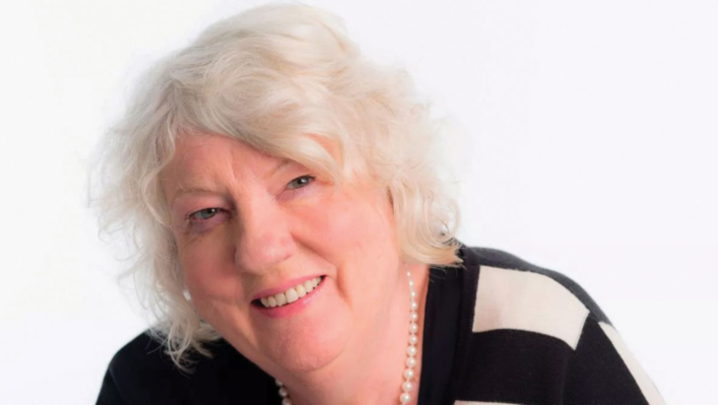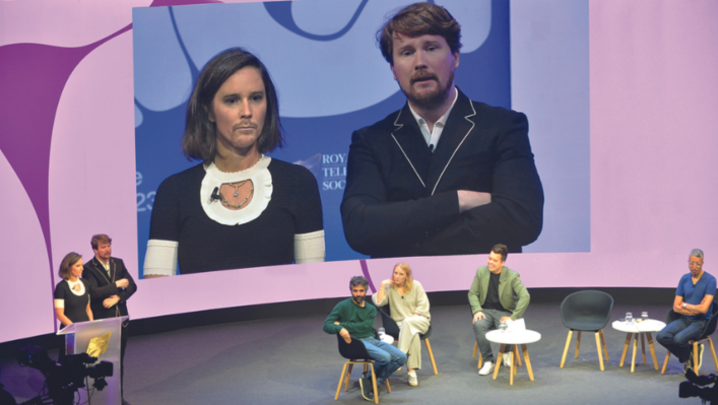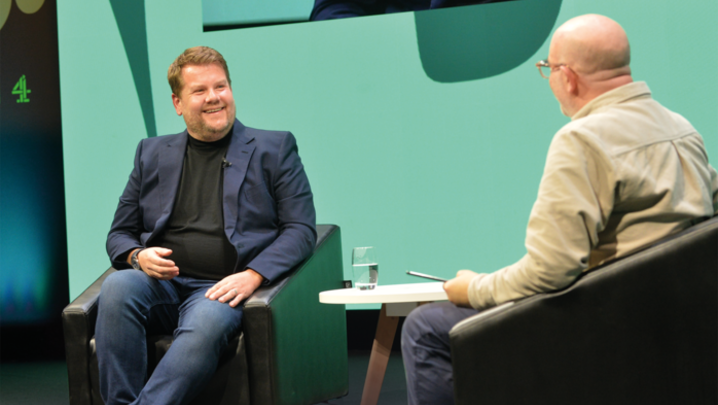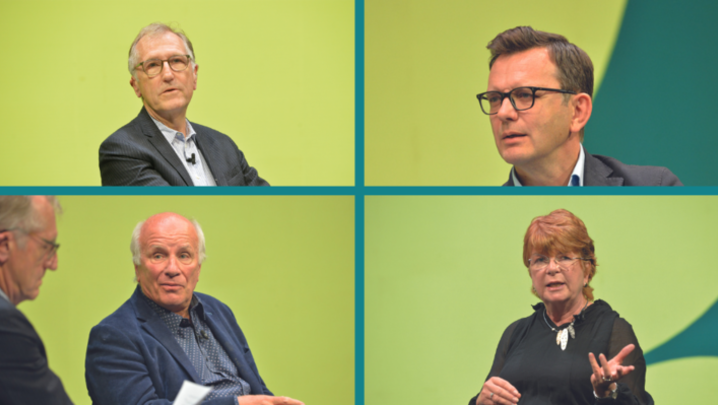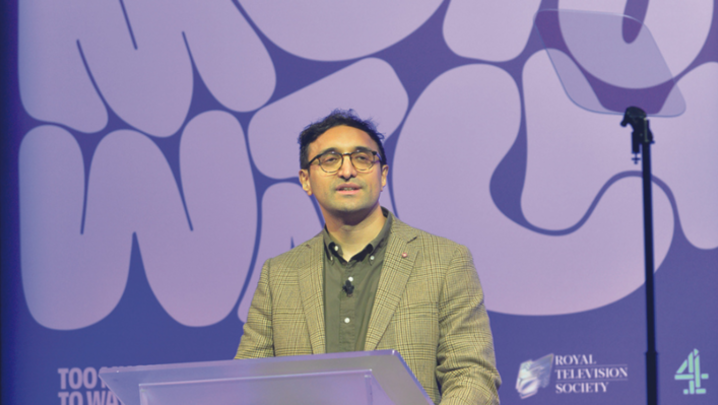Creative collaboration was key to bringing His Dark Materials to the screen, hears an RTS audience.
Everyone who has ever worked in television knows that one of the essential qualities required to produce outstanding TV is the ability to collaborate.
At an RTS discussion, held in early December with key members of the production team of BBC One’s ambitious His Dark Materials, the extent to which different groups worked together to complete the series was made abundantly clear.
“Jane [executive producer Jane Tranter and co-founder of Bad Wolf, the show’s producer] uses the term ‘Loving it on to the screen’,” noted the VFX supervisor on His Dark Materials, Russell Dodgson, creative director of Framestore.
He told his new colleagues from the beginning that working in isolation was not an option. As pre-production got under way, Dodgson made it clear to them that the only way His Dark Materials would work was “if you don’t treat us as a vendor that is going to deliver shots”.
He asked them to “let us into the process and get us involved in the script process. Get us in the mix.
“From day one, they were true to their word. This meant that we could focus on the characterisation of the daemons and do that with a lot of trust – which allowed us to squeeze every penny on to the screen.”
For fans of Philip Pullman’s books, one of the delights of the series is the animated daemons (animal representations of the characters’ souls) painstakingly assembled by Dodgson’s team of digital animators.
He admitted: “I didn’t know if it was doable. In this show, there is an unprecedented amount of creature-based special effects without an unprecedented budget. And that is a bit of a game changer.”
Fellow panellist, writer Jack Thorne, who adapted Pullman’s stories for the screen, told the RTS how he, too, approached the project as very much a collective endeavour.
He said: “It’s not me alone at my desk but a lot of people working together. That’s what makes these shows. Largely, it was the six of us talking [the sixth key individual, script editor Xandria Horton, was absent from the panel] and working out how to do it. Then I’d go away and write it.”
Production designer Joel Collins referred to the show’s “group mind” and “the importance of the group relationship”. He emphasised: “A show like this involves a very big set of relationships. There’s a lot of trust involved – a lot of to-ing and fro-ing.
‘We did 46 drafts of episode one… it’s hard to do justice to genius’
“I’d feed Jack the visual information and the scripts would feed back into the visuals. It was a kind of tag team six months before the show was green-lit.”
Tranter, a former head of BBC drama, explained how she’d wanted to make His Dark Materials for TV since the first book of the trilogy, Northern Lights, was published in 1995.
“If you read them, it was not a big step to think: we could make this for television. But, when these books were published, TV was way behind feature film,” she said.
When Tranter originally asked about the rights, she discovered they had been bought by New Line Cinema. In fact, after the disappointing 2007 feature film The Golden Compass, starring Nicole Kidman and based on Northern Lights, many people thought that turning His Dark Materials into compelling TV was mission impossible.
She claims she felt relieved, reasoning that a TV series made then would have been a perfectly good BBC TV Sunday teatime series, but her ambitions were greater.
Despite the rights being unavailable, she continued to think about adapting the stories. She was encouraged when the film rights weren’t picked up for the second and third books.
She recalled: “I began to circle like a shark waiting for blood. I was lucky enough to be in LA at the time. A few drops of blood began to appear and I went for it.”
Game of Thrones was the decisive factor in taking Pullman’s work and putting it on the small screen. “Game of Thrones showed us what we could do on TV. It was a game changer, due to the way it did visual effects on TV,” said Tranter.
“I never doubted that we could do it, because I knew that people like this [pointing towards the rest of the panel] would make it happen. All I had to do was find them.”
Securing Thorne’s services was a vital part of the development process. But the in-demand screenwriter, described by The Economist recently as akin to British TV’s Charles Dickens, needed convincing.
Not only was his wife, Rachel, pregnant, he was preoccupied by writing the stage play Harry Potter and the Cursed Child. A four-and-a-half-hour conversation with Tranter persuaded him that this was an offer he couldn’t refuse.
“I loved the books so much,” he said. “We did 46 drafts of episode one because we struggled to find the correct path. It’s hard to do justice to genius.”
Turning Pullman’s magical world into multi-episode TV was also challenging for production designer Collins, who had worked with Dodgson on Black Mirror. As Collins explained, much of His Dark Materials was filmed indoors on purpose-built sets at Wolf Studios in Cardiff. Location filming took place in the Brecon Beacons and Iceland.
“What you see in the show is mostly built, which is a testament to Bad Wolf and the idea of filming in a studio,” he said. “The Oxford rooms are mostly fabricated. Oxford didn’t have that magic we needed to create another world.”
The difficulties involved in producing His Dark Materials were all the greater because, once the series was given the go-ahead, a decision was taken to film two series (based on Northern Lights and The Subtle Knife novels, respectively) back to back.
It remains to be seen whether there will be a third season. Tranter hopes that as many as six more TV adaptations of the writer’s work could eventually be made by Bad Wolf.
Her confidence in the project was such that filming began before His Dark Materials’ main co-producer, HBO, was on board. “The BBC trusted Bad Wolf to go out and raise the rest of the money,” she said, adding: “The BBC is one of the few broadcasters in the world that makes shows that are equivalent to this, programmes such as Blue Planet and Planet Earth.
“I don’t think His Dark Materials has got a neighbour in British television in terms of its production values and themes, which are on an adult scale but can be enjoyed by audiences from nine years old to 90.”
She emphasised: “Rather than think you’ve got all the answers, you need humility when you approach a project like this. The other way, absolute disaster lies. You need a mix of confidence, passion and fear.”
And, of course, teamwork.
Report by Steve Clarke. The RTS screening of His Dark Materials episode 6 followed by a Q&A session took place at London’s Mayfair Hotel on 5 December. The panellists were interviewed by journalist and broadcaster Caroline Frost.


